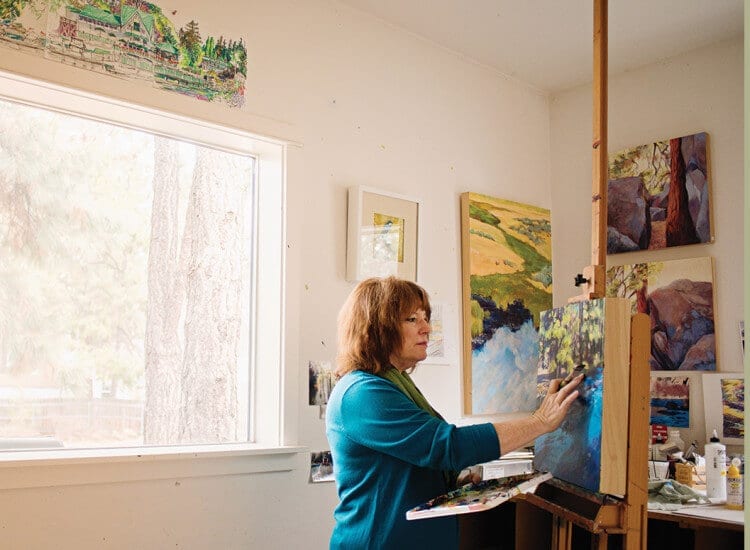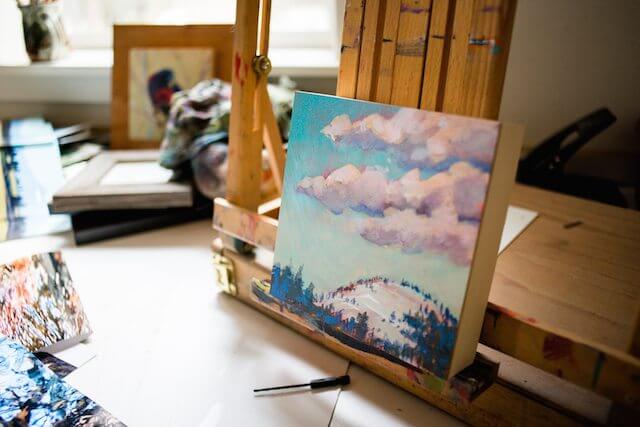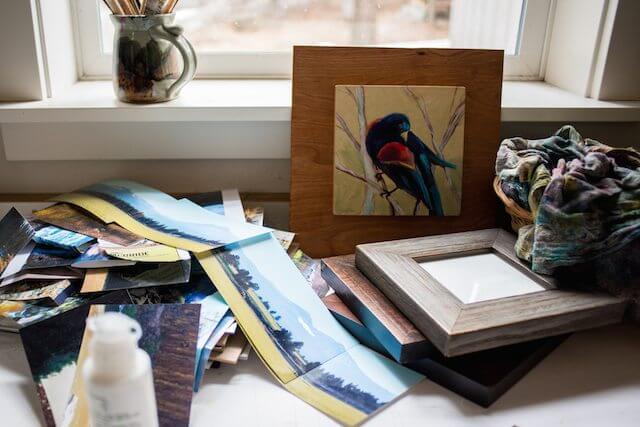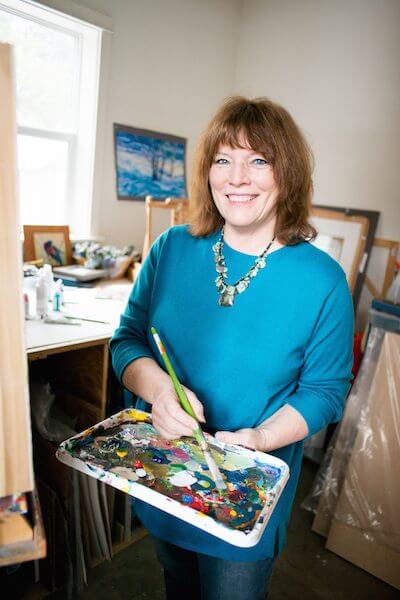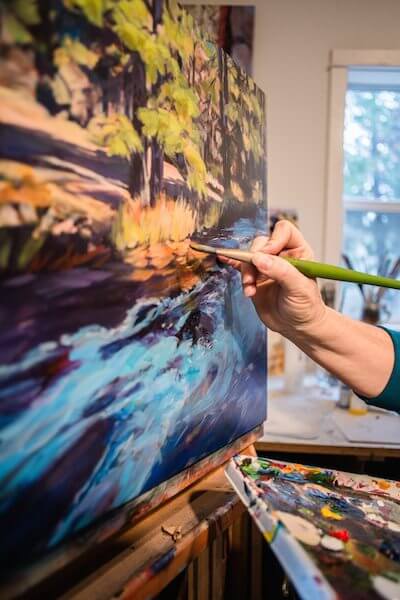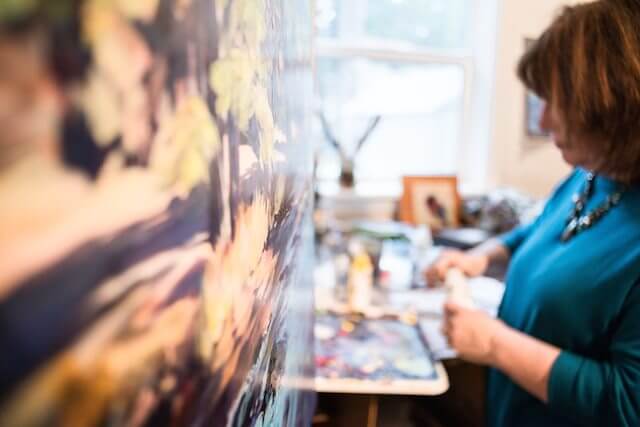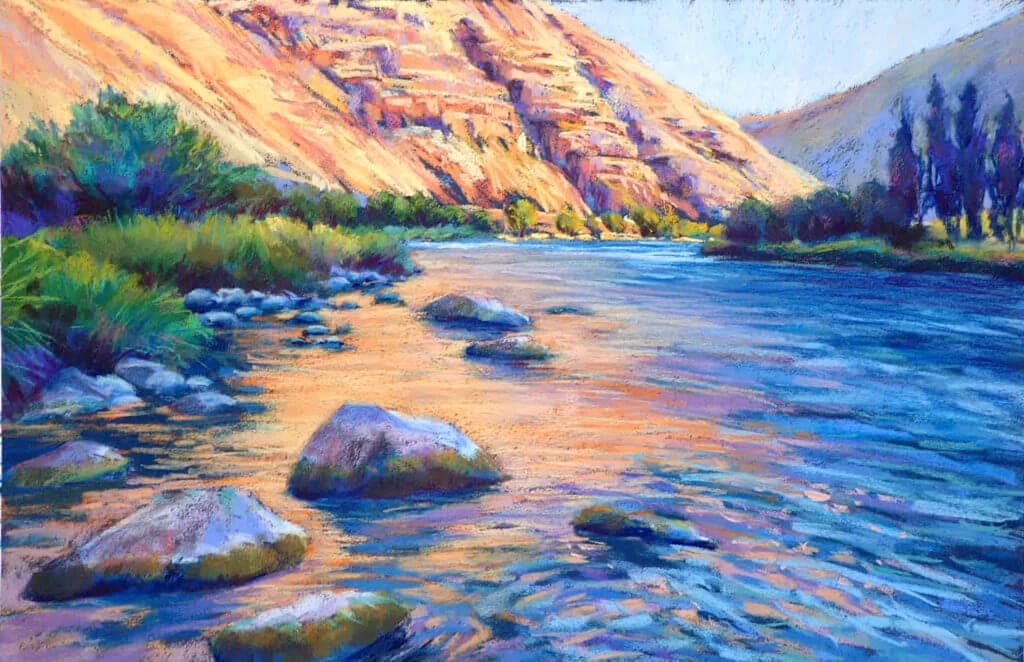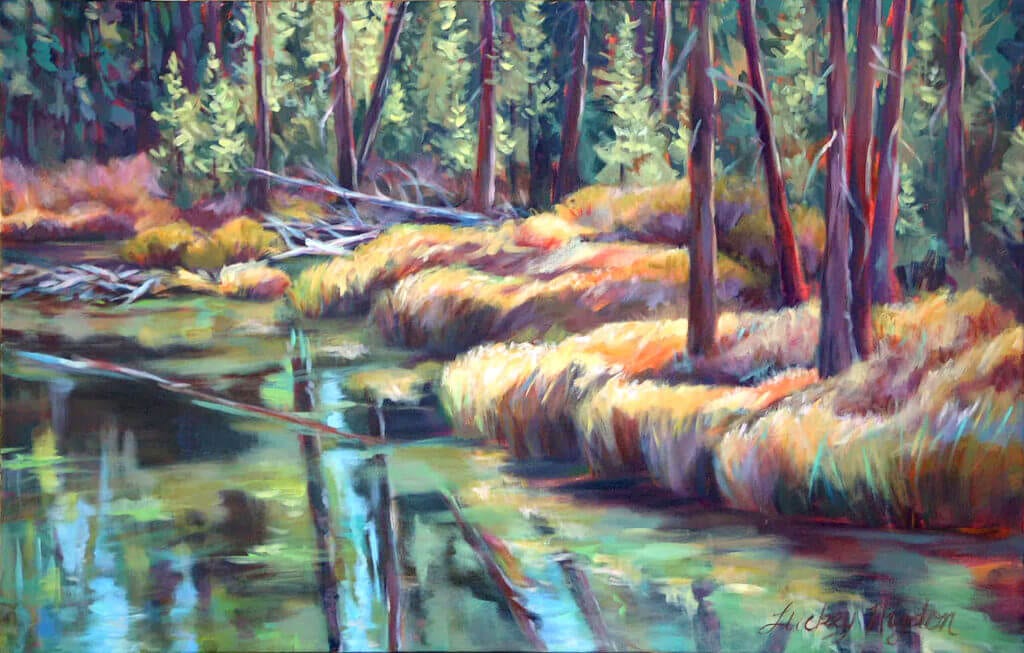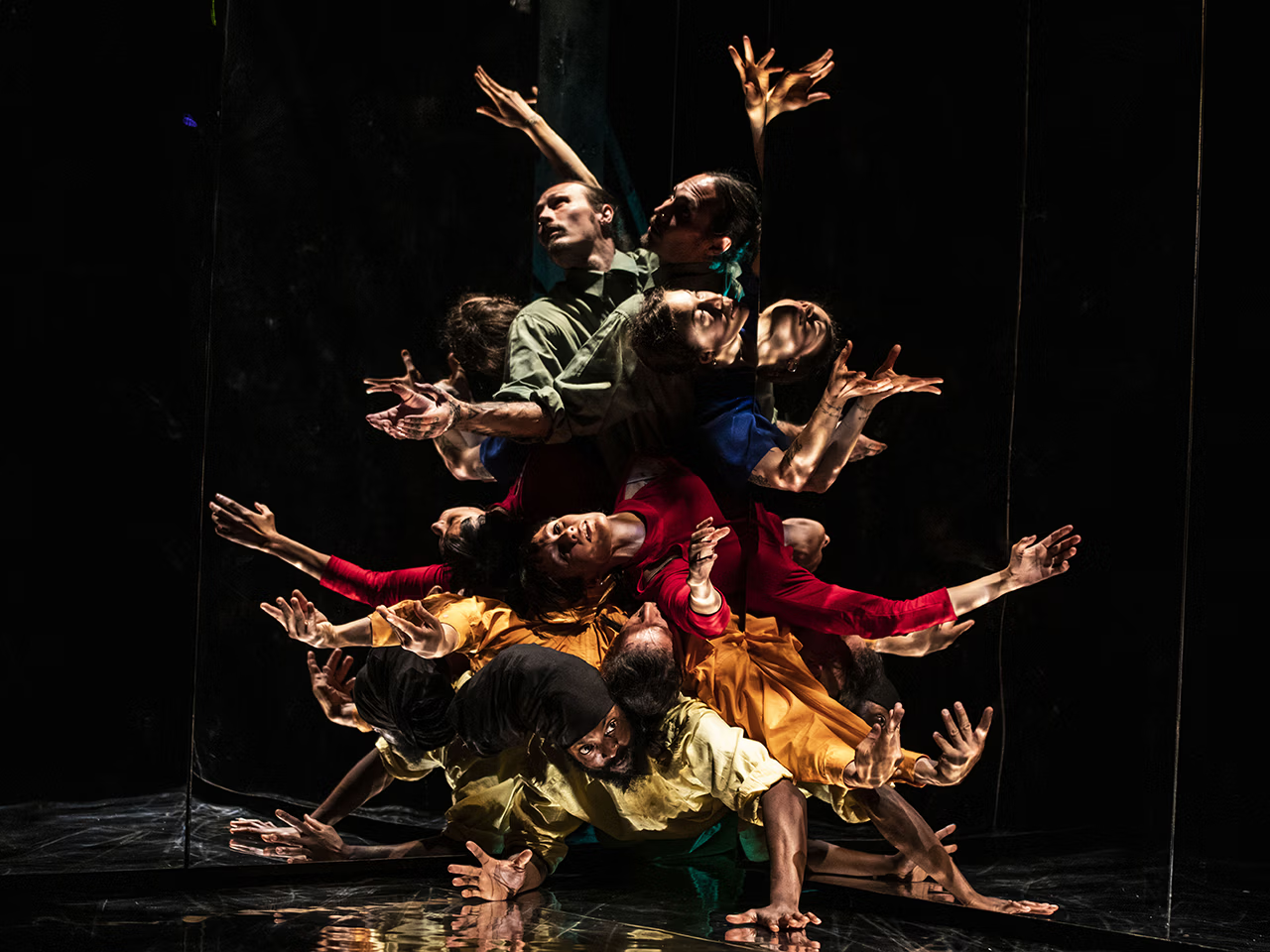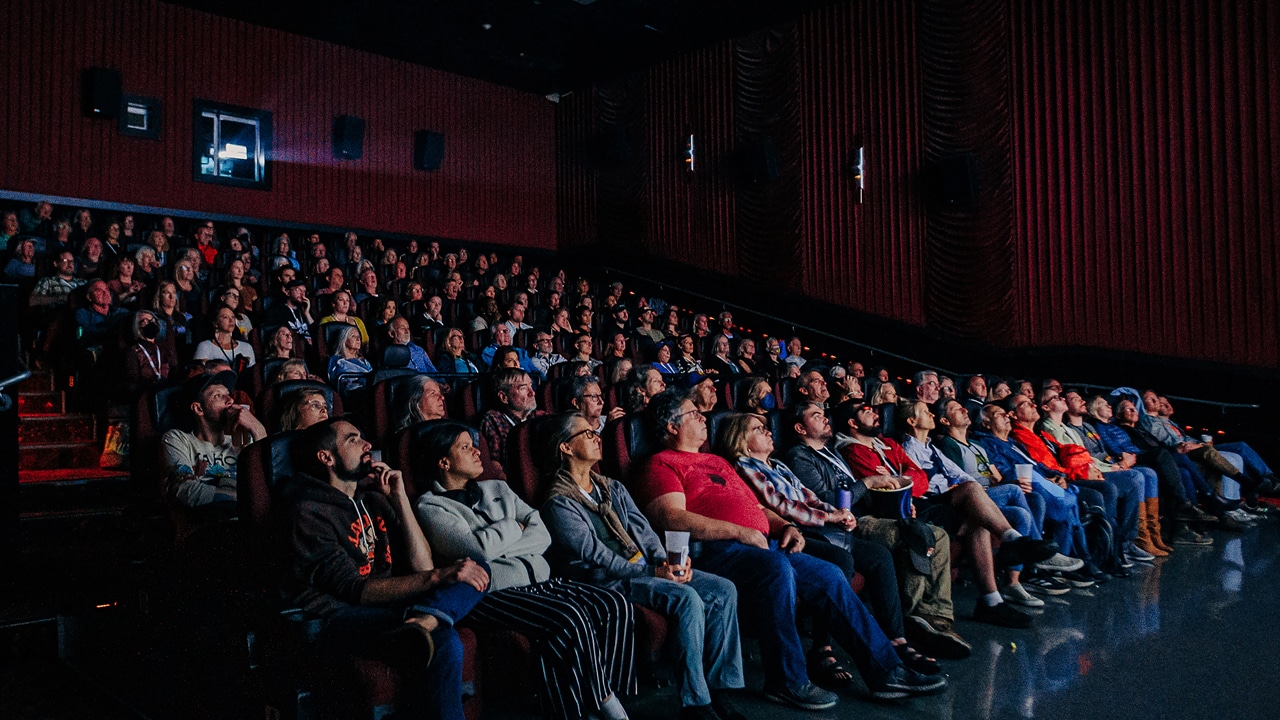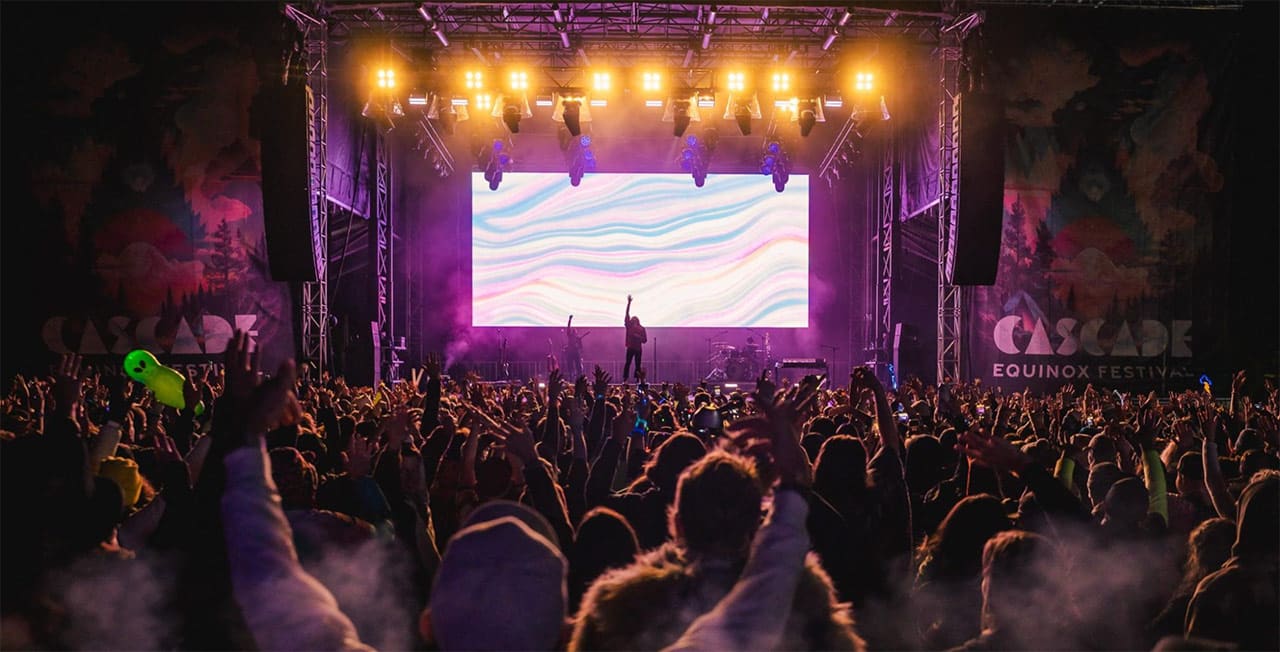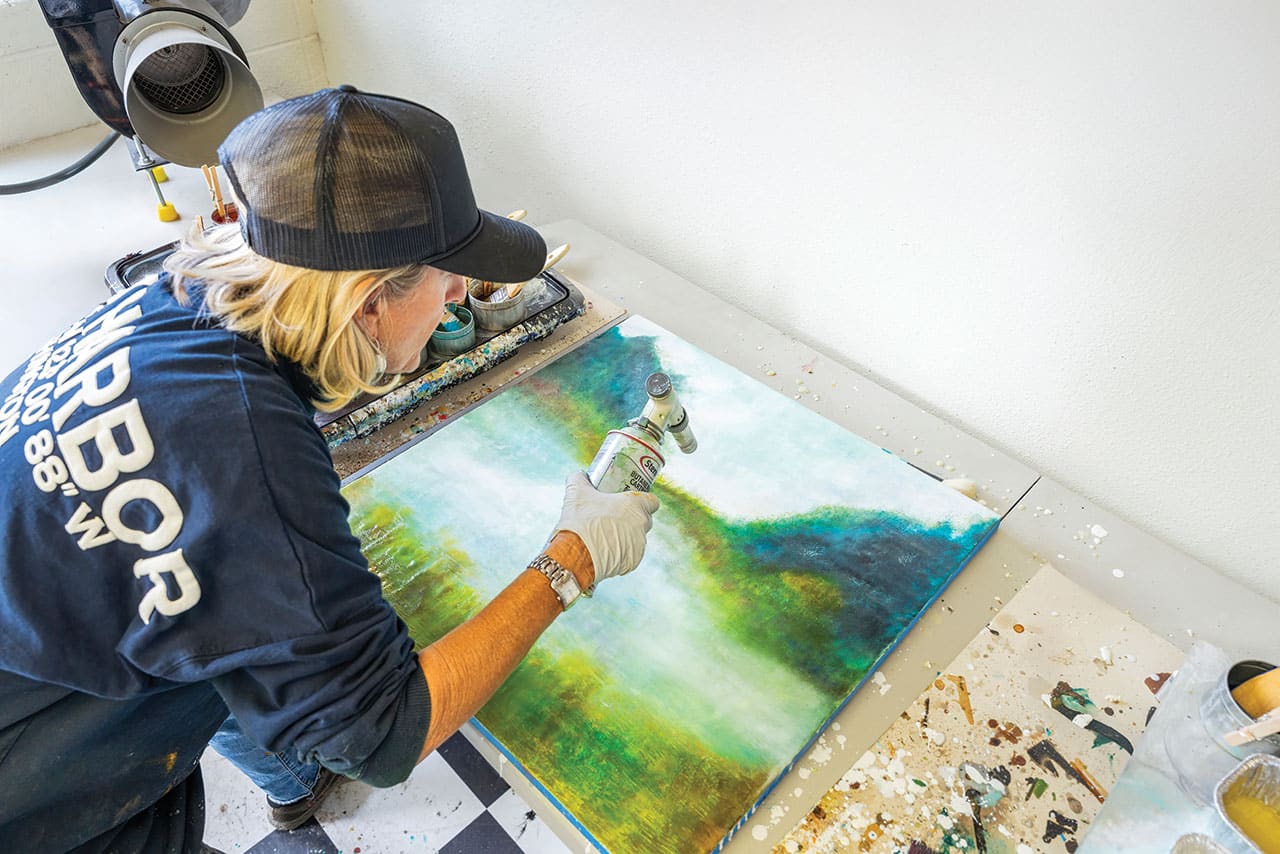Known for her honest, interpretive work informed by Central Oregon’s interesting light and color, the self-taught artist who created a local cooperative is now gravitating toward the abstract.
Like many artists, Susan Luckey Higdon sees things that others don’t. She points to a ponderosa pine outside her living room window in southwest Bend and says most people see a tree; she sees a rainbow of color and shades of light and dark. The self-taught artist and member of Tumalo Art Co. in the Old Mill District has been pulling inspiration from the Central Oregon landscape for twenty-five years. She started painting while working full time as a graphic designer and raising a family. We ask the local artist about paints, pastels, and what it takes to “see” the Central Oregon landscape.
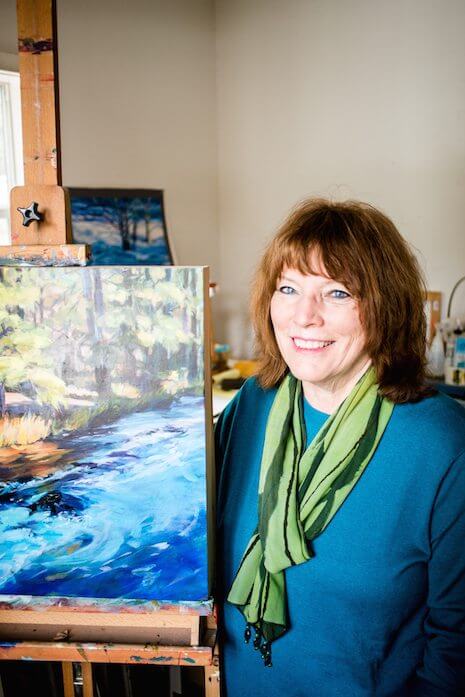
What brought you to Central Oregon and when did you start painting landscapes?
I moved to Central Oregon from the Eugene area over 30 years ago to be an art director for a magazine. About 24 years ago, while still working as an art director in an advertising agency and with two young children, I began to paint landscapes-mostly to do something completely from my right brain and for myself. I started out using soft pastel because they were easy to get out and put away…I would paint in any short block of time that I could carve out. I didn’t have a studio to work in at that time.
Tell us a little bit about your studio. What do you like the most about your workspace?
My studio is not that large but I use every inch of it and can work on very big pieces, and a couple of paintings at once, if I want to. It is attached to my home in such a way that I can be involved in what is going on, but still be “away”. This was important while my kids were growing up…now not so much, but I still love the connection. It has great light with big windows and is a very peaceful space for me. I have also given myself permission to let it be messy.
What’s the one color you couldn’t paint without and why?
I mix all of the colors I use in my paintings from the three primary colors, rarely adding a color outside of those. So, I couldn’t do without any of them! As far as colors that are dominant in my work, there are a lot of blues and I love a very pale, warm yellow. The color of the grasses in winter in Central Oregon. And then that hit of aqua on a ridge line. Capturing the color of deep water and sky is an ongoing challenge.
For you, what’s one of the hardest things to paint?
One of the reasons I paint so much water—above and below the surface, is not only because it is mesmerizing to me, but because it’s so challenging.
Describe your creative process- where do your best ideas for paintings come from?
When I am out, I take photos of the things that catch my eye. Usually patterns, shapes with color, or light that is hitting the landscape in an unusual way. I work the compositions until I like what is happening, either in photoshop or by physically folding and refolding an enlargement. What interests me most is to abstract reality using composition, which creates a little bit of friction, causing the landscape to be viewed in a slightly different way. I have to be able to “see” the essence of what I want to capture using paint. Then I can do it. Sometimes that feeling of being able to “see” it is very fleeting.

